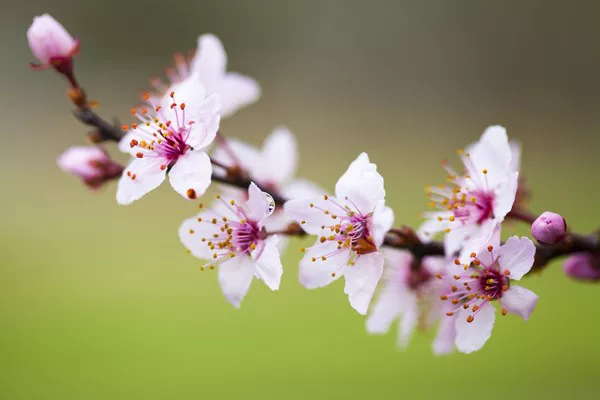Flowers have been cherished for centuries for their beauty and fragrance. Whether you receive a bouquet on a special occasion, grow them in your garden, or buy them at a local florist, understanding the factors that influence how long flowers remain fresh is essential.
The Role of Flower Type in Longevity
The longevity of flowers is significantly influenced by the type of flowers you choose. Different flower species have varying natural lifespans. Some, like roses and lilies, are known for their ability to last longer than others. It’s important to consider the natural lifespan of a flower when selecting the right blooms for your purpose, whether it’s a special event or a simple decorative arrangement.
Factors Affecting Flower Longevity
Several factors play a crucial role in determining how long flowers remain fresh and vibrant. These factors can be broadly categorized into four main areas:
Water: Adequate hydration is vital for flower longevity. Flowers continue to take up water even after they are cut. The lack of water can lead to wilting and a shorter vase life.
Temperature: The temperature at which you keep your flowers significantly impacts their longevity. Most flowers thrive in cooler environments, as heat accelerates their aging process.
Humidity: The right humidity levels can prevent the rapid evaporation of water from the flowers and maintain their freshness.
Bacteria and Fungi: Proper hygiene and cleanliness are essential to keep harmful microorganisms at bay, as they can shorten the lifespan of flowers.
Tips for Prolonging the Lifespan of Cut Flowers
To maximize the longevity of your cut flowers, consider these valuable tips:
Clean Water: Start with clean, room-temperature water. Change the water every 2-3 days to prevent the growth of bacteria.
Fresh Cut: Trim the stems at a slight angle before placing them in the vase. This increases the surface area for water absorption.
Remove Foliage: Remove any leaves that will be submerged in water, as they can decay and promote bacterial growth.
Proper Vase Placement: Display your flowers in a cool spot away from direct sunlight and drafts.
Flower Food: Flower preservatives, available at florists, provide essential nutrients and help prevent bacterial growth. Follow the instructions for use.
Mist the Flowers: Some flowers, like orchids, benefit from occasional misting to maintain humidity.
Ethylene Sensitivity: Be aware of ethylene-producing fruits and vegetables, as they can accelerate the aging of some flowers. Keep them separate.
Science Behind Flower Preservation
Understanding the science behind flower preservation can provide deeper insights into flower longevity:
Water Uptake: Flowers continue to absorb water through their stem after cutting, thanks to tiny tubes called xylem. Keeping the xylem clear and unclogged is crucial for maintaining hydration.
Transpiration: The loss of water through evaporation, called transpiration, is a natural process. Controlling the rate of transpiration through proper temperature and humidity management is key to prolonging flower life.
Respiration: Just like all living organisms, flowers respire. Respiration produces heat, so keeping flowers in a cool environment reduces respiration rates and extends their freshness.
Cellular Senescence: As flowers age, individual cells within the petals and leaves begin to die off, causing wilting and browning. Ethylene, a natural plant hormone, can speed up this process.
Microorganisms: Bacteria and fungi present in the water can block the xylem and shorten flower life. Floral preservatives contain antimicrobial agents to combat this issue.
The Role of Floral Preservatives
Floral preservatives play a vital role in extending the vase life of cut flowers. They are specially formulated to provide essential nutrients and inhibit bacterial growth. The key components of floral preservatives include:
Sucrose: A sugar source that nourishes the flowers.
Citric Acid: Acidifies the water, which helps improve water uptake.
Biocides: These antimicrobial agents combat bacterial growth in the vase.
Using a floral preservative in the vase water significantly extends the freshness of your flowers, making it an excellent investment for special occasions.
The Impact of Flower Condition on Longevity
When purchasing or cutting flowers, their condition at the time of harvest or purchase can significantly affect their longevity. The following factors influence the condition of the flowers:
Maturity: Flowers that are harvested at their peak maturity tend to have a longer vase life compared to those harvested too early or too late.
Temperature Control: Proper storage and transportation at the right temperature ensure that the flowers are not subjected to unnecessary stress.
Hydration: Flowers that have been well-hydrated before sale or use tend to last longer.
Handling: Gentle handling during harvest, transport, and arranging can prevent bruising and damage, which can reduce vase life.
The Lifespan of Different Flower Types
Each flower variety has its unique vase life. While it’s important to note that individual conditions can influence longevity, here are some common flowers and their typical vase life:
Roses: With proper care, roses can last from 7 to 10 days or even longer.
Lilies: Asiatic and Oriental lilies usually last 7 to 10 days, while some other varieties may have a slightly shorter lifespan.
Tulips: Tulips have a shorter vase life, usually around 5 to 7 days.
Carnations: With proper care, carnations can last up to 14 days.
Chrysanthemums: Chrysanthemums are known for their longevity, lasting up to 14 days or more.
Orchids: Orchids can remain fresh for several weeks, sometimes even months.
Daisies: Daisies typically last 7 to 14 days.
Conclusion
Flowers are not only nature’s artwork but also symbols of love, celebration, and beauty. Understanding the various factors affecting flower longevity and implementing the right care practices can help you enjoy their splendor for an extended period. By choosing the right type of flowers, providing proper care, and using floral preservatives, you can ensure that your floral arrangements and bouquets remain fresh and vibrant, brightening your space and your spirits.


